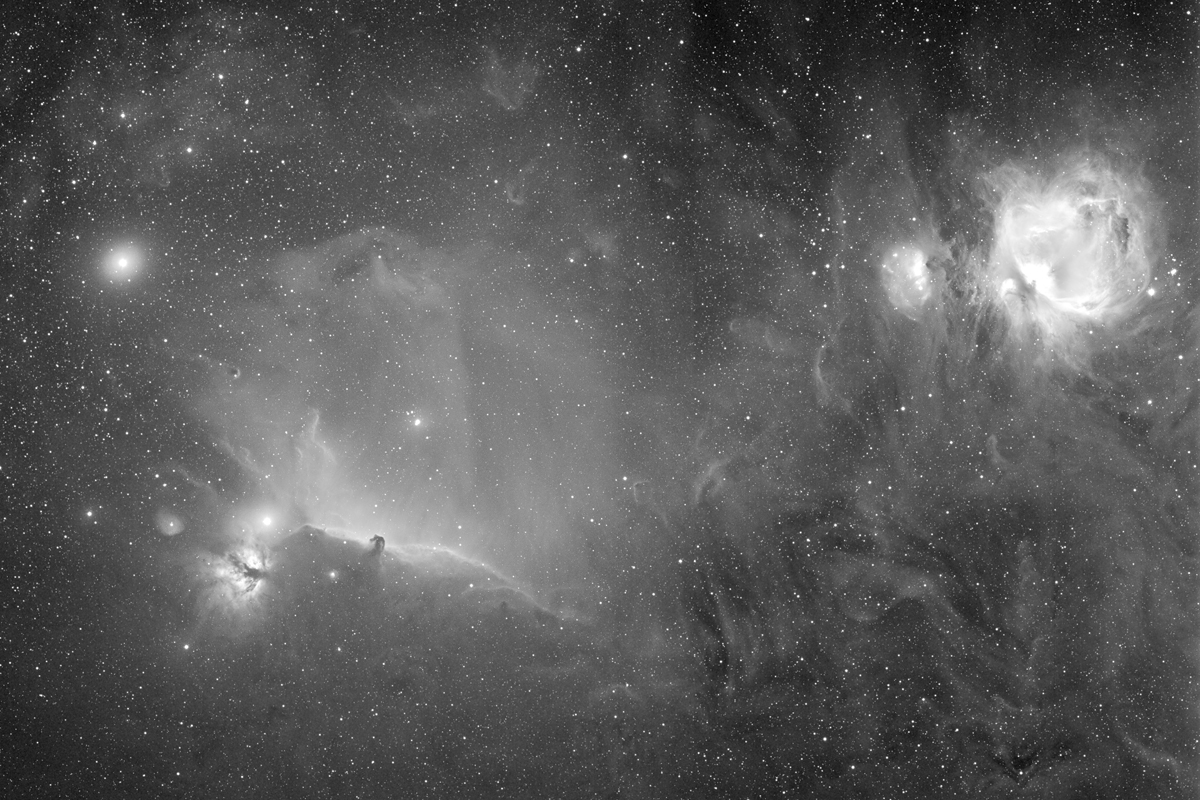
The Orion Nebula M42 is the brightest diffuse nebula in the sky, and one of the brightest deepsky objects of all. It is visible to the naked eye under moderately good conditions, and rewarding in telescopes of every size, from the smallest glasses to the greatest Earth-bound observatories as well as outer-space observatories like the Hubble Space Telescope. It is also a big object in the sky, extending to over 1 degree in diameter, thus covering more than four times the area of the Full Moon.
As it is so well visible to the naked eye, one may wonder that its nebulous nature was apparently not documented before the invention of the telescope. However, the brightest stars within the nebula were noted early and cataloged as one bright star of about fifth magnitude: In about 130 AD, Ptolemy included it in his catalog, as did Tycho Brahe in the late 16th century, and Johann Bayer in 1603 - the latter cataloging it as Theta Orion in his Uranometria. In 1610, Galileo detected a number of faint stars when first looking at this region with his telescope, but didn't note the nebula. Some years later, on February 4, 1617, Galileo took a closer look at the main star, Theta1, and found it to be triple, at his magnification of 27 or 28x, again not perceiving the nebula.
The remarkable Horsehead is a dark globule of dust and non-luminous gas, obscuring the light coming from behind, especially the moderately bright nebula IC 434. It is the most remarkable feature of an interesting region of diffuse nebulae, which belongs to a huge cloud of gas and dust situated 1,600 light years away in the direction of constellation Orion. The bright reflection nebula in the lower left is NGC 2023. ]